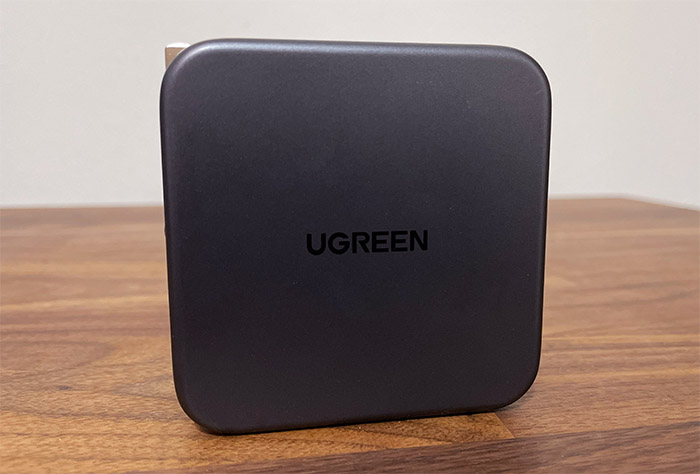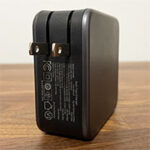The latest semiconductor revolution brought us the GaN technology which started out shy, offering 10-20W in a slightly more compact case than the traditional chargers, but it quickly picked up steam and the manufacturer got far more bolder.
| UGREEN Nexode 140W | |
|---|---|
| UGREEN.com | Check Product |
| Amazon.com | Check Product |
That’s how we end up with portable chargers capable of outputting 140W (and more) from a single USB port, while keeping the heat loss to a minimum, so it’s not difficult to handle multiple laptops at the same time. I do need to put more emphasis on the portable aspect because some of these chargers can indeed be carried in a pocket (a larger one, but the point still stands).
I have tested the UGreen 100W a few months ago and it seems that the manufacturer decided to release a 140W GaN charger as well, which would put it in direct competition with Apple’s own 140W charger, as well as the other manufacturers, such as Kovol (with its Sprint 140W charger).
Apple did try to close the advantage that the third-party manufacturers had when it essentially left out the charger out of the box of its iPhones, but its 140W GaN charger only has one USB port available, while the UGreen Nexode 140W charger has three available, including a USB-A port.
And there is another accessory that UGreen has added in the package that has pleasantly surprised me and it’s a USB-C cable! Finally, someone added a cable and it’s a braided one – it also measures approximately 5 feet (1.5 meters) which is long enough for most applications.
The UGreen Nexode 140W charger is more compact than the Kovol Sprint 140W (which was surprisingly small in itself), measuring 3.0 x 3.0 x 1.4 inches (7.6 x 7.6 x 3.5 cm). It’s not the smallest charger out there, but for an output of 140W, it’s very compact, plus the retractable plug which ensures that it will easily be carried around in a bag (and even in the pocket).
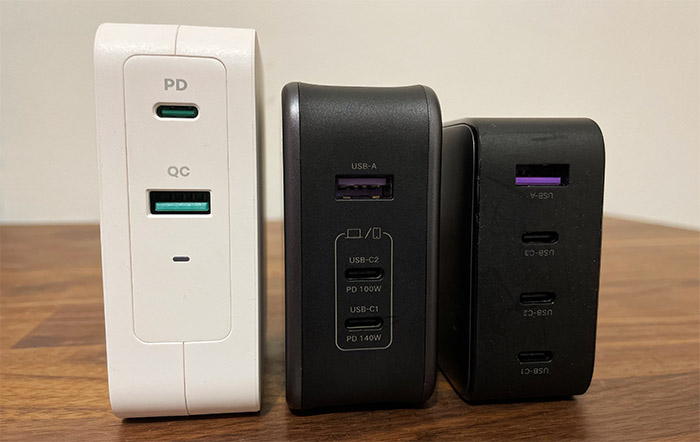
The non-US versions don’t have this luxury, because the plug will be fixed and pointing outwards (obviously). The case is made of plastic with three parts fused together which make for a nice visual effect, but the charger does feel a bit strange in hand. Like the plastic may bend, even if it doesn’t. Similarly to the 100W charger, the UGreen Nexode 140W does not have a Power LED to let you know that the device is connected to a power source.
But it does have three USB ports. The uppermost one is a USB-A port that can reach up to 22.5W, so it’s suitable for non-demanding devices, but what’s interesting is the first USB-C port because it can reach up to 140W by itself. How it that even possible?
It seems that UGreen has payed very close attention to the Power Delivery 3.1 tech that was made available not that long ago. What PD 3.1 does is to raise the fixed voltage to 28V, allowing power levels of 140W. It can go farther than that since the voltage can also be 36V and 48V, allowing a power output of 180W and 240W respectively.
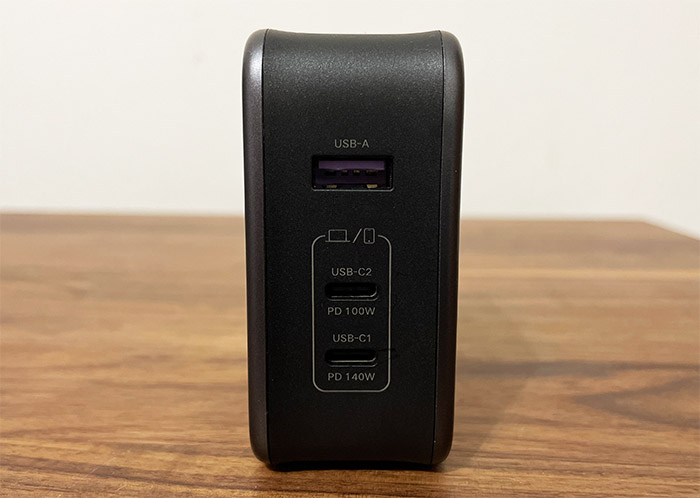
In our case, the UGreen Nexode 140W is what can be called an entry-level model, which is why it still kept the compact size. The secondary USB-C port can go up to 100W when it’s the only port in use. If you add another device to the USB-C, then the output for both falls to 65W each.
Furthermore, using any of the two USB-C ports along with the USB-A port will limit the output to 100W (so, it’s unchanged for the secondary USB-C port). If you use all three ports at the same time, only the two USB-C ports are impacted, the first going down to 65W, while the second USB-C is limited to 45W.
As for the advertised output for the first USB-C port, it’s 5V/3A, 9V,/3A, 12V/3A, 15V/3A, 20V/5A and 28V/5A. For the secondary USB-C, it’s 5V/3A, 9V,/3A, 12V/3A, 15V/3A and 20V/5A, while for the USB-A port, it’s 5V/3A, 4.5V/5A, 5V/3A, 9V/2A and 12V/1.5A.
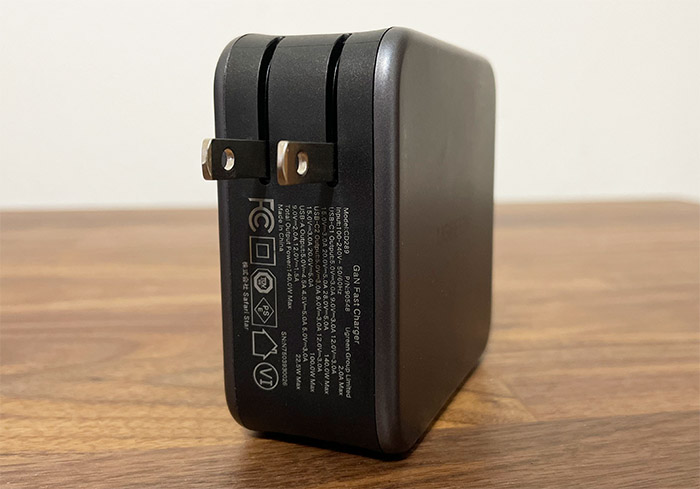
As with all other chargers that I tested, I connected the UGreen Nexode 140W to a 13-inch MacBook Pro and, while it couldn’t draw up to the advertised 140W when connected to the first USB-C port, I did see 56W, which is very close to the Kovol 140W performance.
The voltage was 19.97V and the amperage ranged between 2.7 to 2.8A. There was no difference in output between the USB-C 1 and 2, since I didn’t have a powerful enough device to push past 100W. But I still did a few interesting tests.
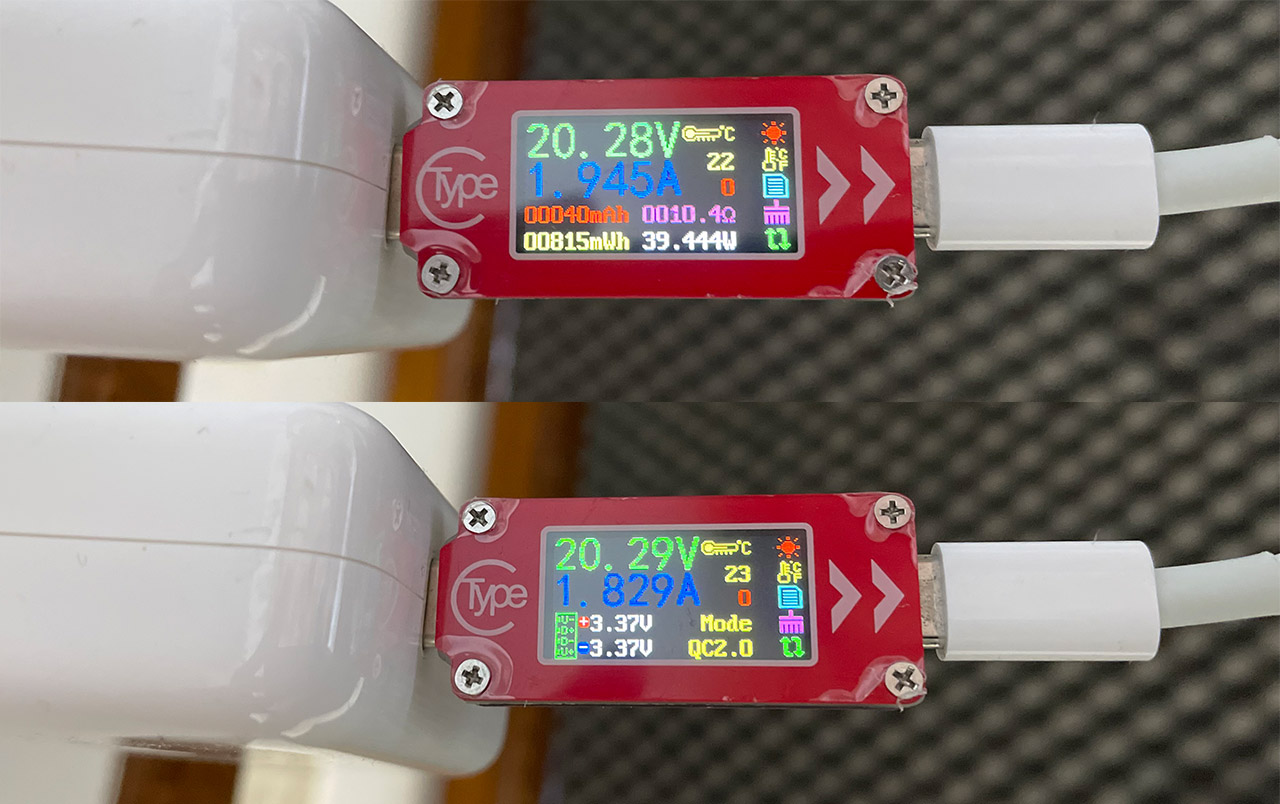
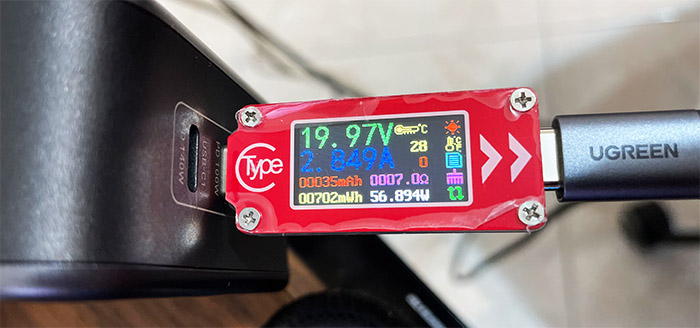
I connected an iPhone 12 to the secondary USB-C while I was charging the MacBook Pro and it could draw an average of 21W, with the voltage steady at 9.09V (the amperage moved between 2.13 to 2.17A). But I do need to mention that connecting and disconnecting a secondary cable on any of the USB-C ports, it will cause the other to turn off for a brief moment and recalculate the power output.
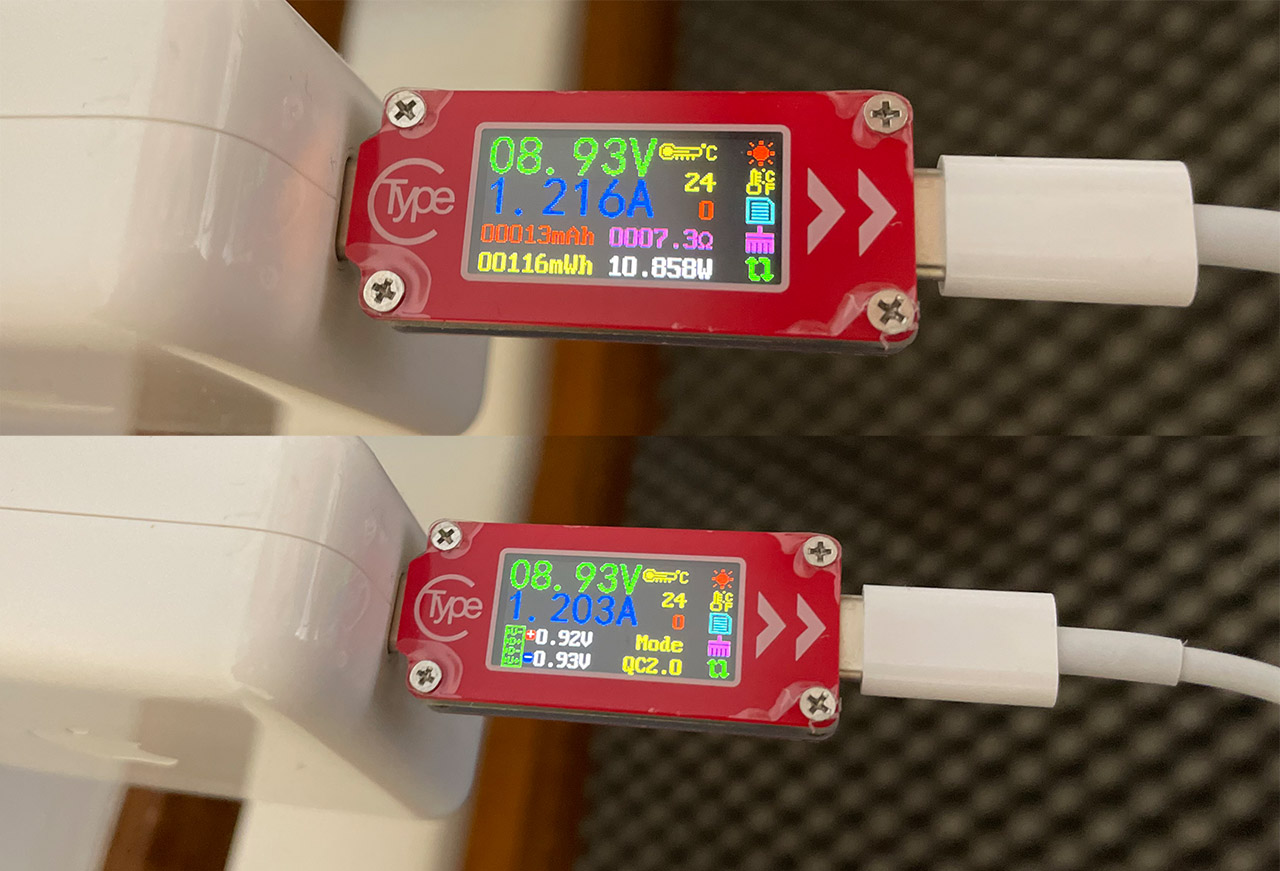
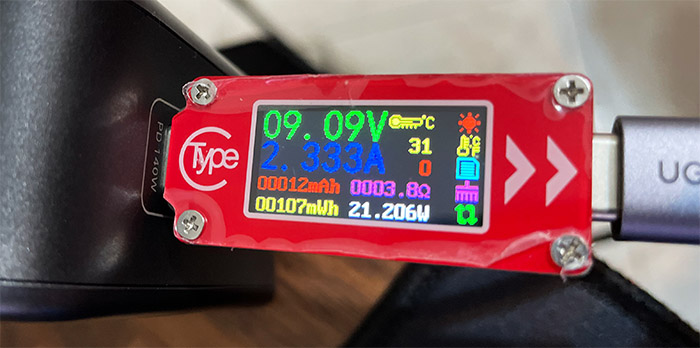
This is an issue when you connect devices which require constant power flow. The USB-A is unaffected and doesn’t have any impact on the USB-C ports, so it has a different controller. This is confirmed by the thermal photo which shows that the UGreen Nexode gets a bit hotter near the USB-A port and cooler next to the more powerful USB-C ports.
There is one more thing that I need to mention and that it’s not really the secondary device that causes the pausing of the charge on the USB-C ports, it’s the simple act of connecting a cable. For example, I connected all three USB ports to some devices, which has limited the power output of the secondary USB-C port to 45W.

In my test, it showed 43W, which is close enough (some overhead), but, after disconnecting the device from the main USB-C, while keeping the cable connected, there was no change for the output of the second USB-C. This means that you should not leave cables connected to the charger since they will have an impact on the output (even if it sounds a bit ridiculous).
Another thing that I wanted to check was if the UGreen Nexode 140W charger draws any substantial amount of power while it’s in idle mode. I saw that it needs about 0.05W, so nothing substantial. Lastly, I checked the power output of the USB-A port and it offered an average of 9W when connected to an AGM Glory Pro. The voltage was 5.21V and the amperage moved between 1.77 and 1.8A.
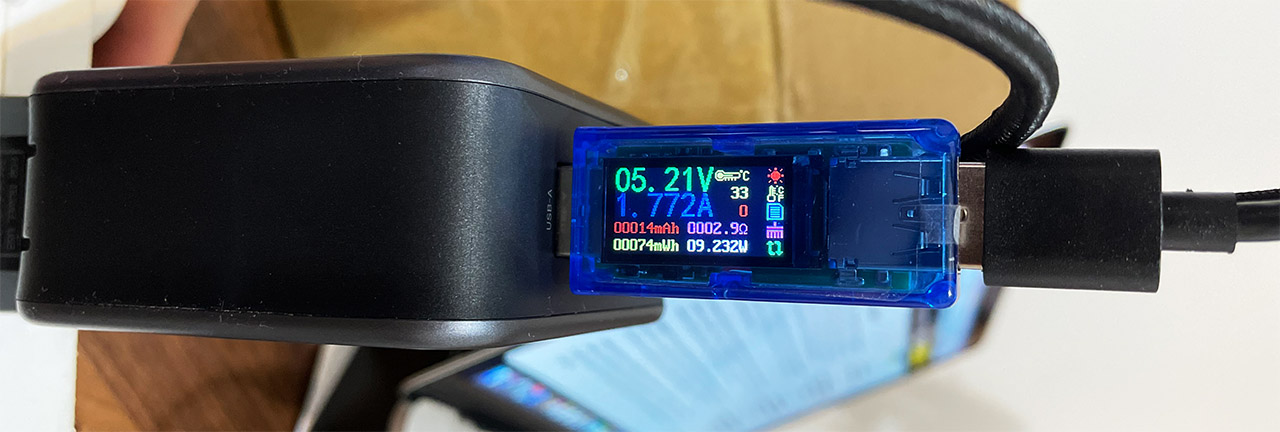
UGreen Nexode 140W
-Pros
- There is a 3-foot long USB-C cable inside the package
- 140W max output
- Two USB-C ports and a USB-A port
- Compact, considering the power output
- GaN technology
Cons
- The two USB-C ports use the same controller and will briefly pause the connection when connecting or disconnecting a new device to these ports to re-calculate the power output
- The charger doesn't make the difference between cable connected and device connected

Mark is a graduate in Computer Science, having gathered valuable experience over the years working in IT as a programmer. Mark is also the main tech writer for MBReviews.com, covering not only his passion, the networking devices, but also other cool electronic gadgets that you may find useful for your every day life.

